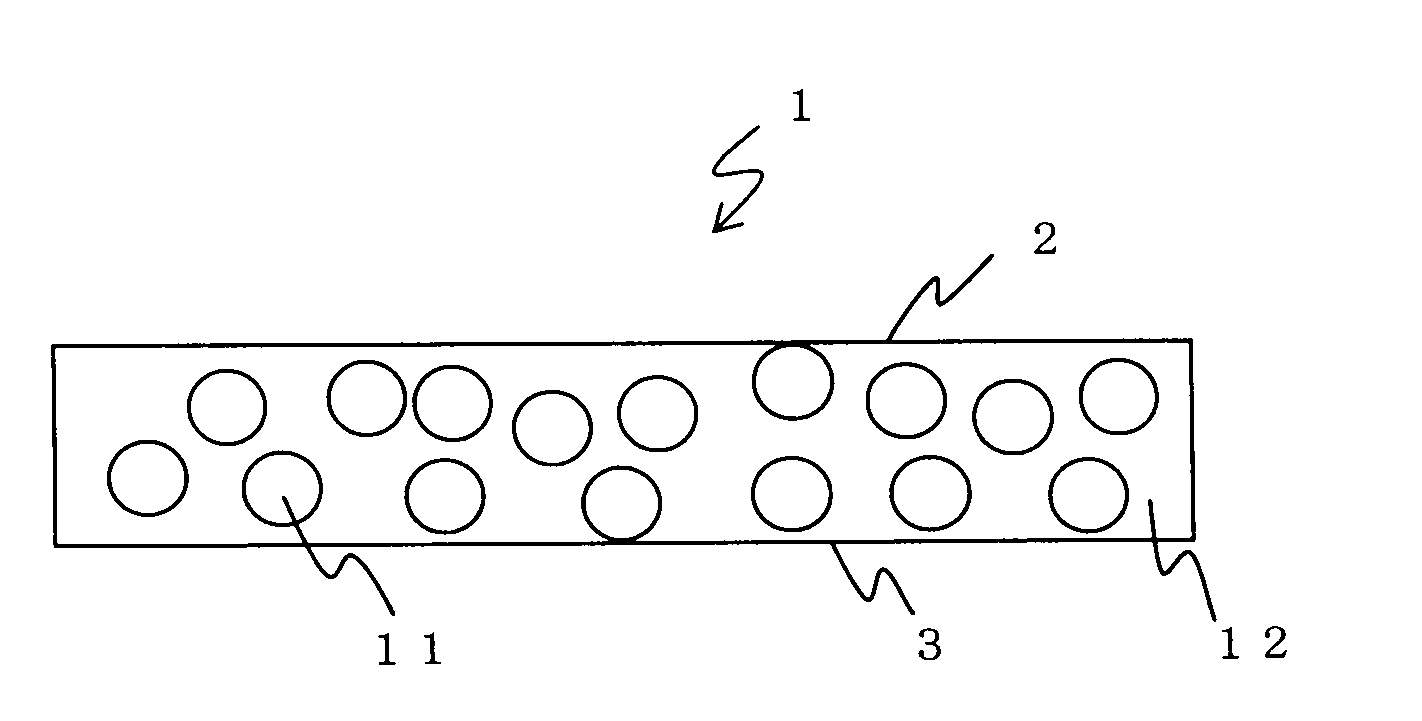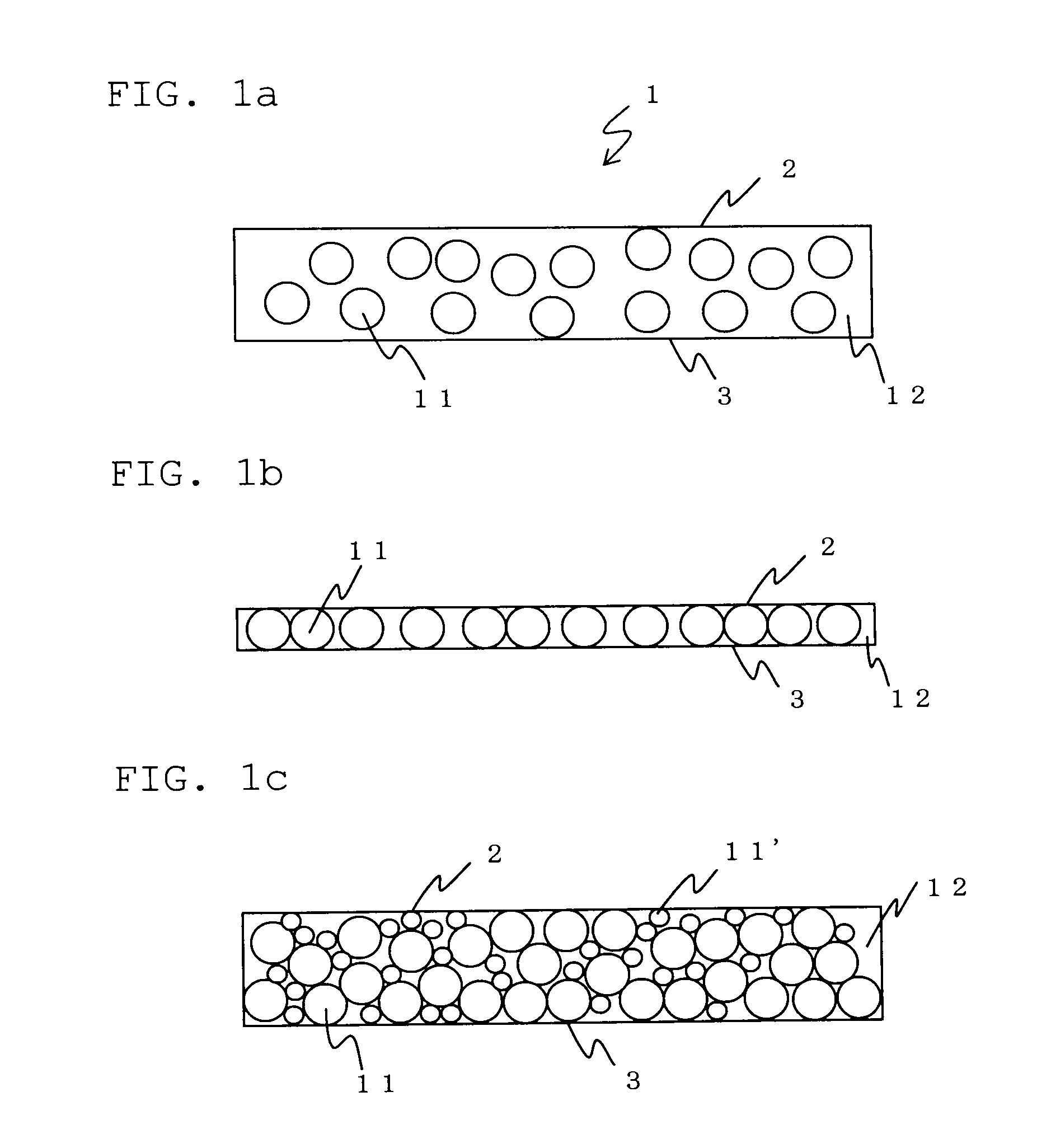Solid electrolyte sheet
- Summary
- Abstract
- Description
- Claims
- Application Information
AI Technical Summary
Benefits of technology
Problems solved by technology
Method used
Image
Examples
production example 1
Formation of Inorganic Solid Electrolyte
(1) Production of Lithium Sulfide (Li2S)
[0066]Lithium sulfide was produced by the first aspect method (two step method) disclosed in JP-A-7-330312. Specifically, a 10-liter autoclave equipped with a stirring blade was charged with 3326.4 g (33.6 mol) of N-methyl-2-pyrrolidone (NMP) and 287.4 g (12 mol) of lithium hydroxide. The mixture was then heated to 130° C. with stirring at 300 rpm. Then, hydrogen sulfide was bubbled into the solution for two hours at a supply rate of 3 l / min. The temperature of the reaction solution was increased in a nitrogen stream (200 cc / min) to desulfurize and hydrogenate part of the hydrogen sulfide reacted. Water produced during the reaction between hydrogen sulfide and lithium hydroxide as a by-product started to vaporize as the temperature of the reaction mixture was increased. The water was condensed using a condenser and removed from the system. The temperature of the reaction mixture increased when water was ...
production example 2
Synthesis of Binder
[0075]207.6 g (2.0 mole) of trimethyl borate was added to 230 g (1.0 mole) of dibutylenglycol monomethacrylate and 496 g (2.0 mole) of tributyleneglycol monomethyl ether. The mixture was allowed to stand with stirring at 60° C. for 1 hour in an atmosphere of dried air. The temperature was then raised to 75° C. After reaching 75° C., the pressure of the system was gradually reduced.
[0076]The pressure of 2.67 kPa (20 mmHg) or less was kept for 6 hours, during which volatile matters generated with progress in the borate ester exchange reaction and excessive trimethyl borate were removed. The resultant mixture was filtered to obtain 720 g of the following polymerizable boron-containing compound of formula 1.
wherein Z1 to Z3 are a methacryloyl or methyl group, and l, m and n are 2 or 3.
[0077]The polymerizable boron-containing compound was measured for infrared absorption spectrum. As a result, the absorption band derived from a hydroxyl group at 3300 cm−1 disappeared.
[...
example 1
[0080]Dehydrated tetrohydrofuran was added to 9 g of the inorganic solid electrolyte powder produced in Production Example 1 and 1 g of the polymer electrolyte produced in Production Example 2. They were sufficiently mixed and stirred to form a slurry. The slurry was applied on a plate made of tetrafluoroethylene to form a film. The film was dried at 60° C. under reduced pressure and extended by applying pressure to obtain a 120-μm-thick solid electrolyte sheet.
[0081]The solid electrolyte sheet was evaluated for the following.
(1) Ion Conductivity
[0082]An electrolyte sheet was sandwiched between stainless steal electrodes to form an electrochemical cell. An ion conductivity was measured by an AC impedance method where an alternating current was applied across the electrodes to measure resistance components. The ion conductivity was calculated from real number impedance intercepts of Cole-Cole plots.
(2)Evaluation of Performance During Charge and Discharge
[0083]The following battery wa...
PUM
 Login to View More
Login to View More Abstract
Description
Claims
Application Information
 Login to View More
Login to View More - R&D
- Intellectual Property
- Life Sciences
- Materials
- Tech Scout
- Unparalleled Data Quality
- Higher Quality Content
- 60% Fewer Hallucinations
Browse by: Latest US Patents, China's latest patents, Technical Efficacy Thesaurus, Application Domain, Technology Topic, Popular Technical Reports.
© 2025 PatSnap. All rights reserved.Legal|Privacy policy|Modern Slavery Act Transparency Statement|Sitemap|About US| Contact US: help@patsnap.com



